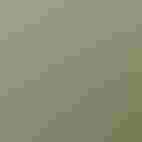Black Tern
At a Glance
A small, graceful marsh tern, black and silver in breeding plumage. In its choice of surroundings, it leads a double life: in North America in summer it is a typical bird of freshwater marshes, but in winter it becomes a seabird along tropical coasts. Vulnerable to loss of marsh habitat, its numbers have decreased in many areas during recent decades.
All bird guide text and rangemaps adapted from Lives of North American Birds by Kenn Kaufman© 1996, used by permission of Houghton Mifflin Harcourt Publishing Company. All rights reserved.
Category
Gull-like Birds, Gulls and Terns
IUCN Status
Least Concern
Habitat
Coasts and Shorelines, Freshwater Wetlands, Lakes, Ponds, and Rivers, Saltwater Wetlands
Region
Alaska and The North, California, Eastern Canada, Florida, Great Lakes, Mid Atlantic, New England, Northwest, Plains, Rocky Mountains, Southeast, Southwest, Texas, Western Canada
Behavior
Direct Flight, Erratic, Undulating
Population
5.100.000
Range & Identification
Migration & Range Maps
Most apparently migrate north through interior of North America. In late summer, many move east to Atlantic Coast before turning south; those from farther west may move south to coasts of Mexico and continue southward offshore. Winters mostly along north and northwest coasts of South America.
Description
10" (25 cm). W. 24 (61 cm). Summer adult has head and body mostly black, wings and tail silvery gray. Immatures and winter adults less distinctive, mostly white below, but still darker on back than other small terns, with dark mark at shoulder. Adults molting out of breeding plumage in late summer look patchy black and white.
Size
About the size of a Robin
Color
Black, Brown, Gray, White
Wing Shape
Broad, Pointed, Tapered
Tail Shape
Notched, Short, Square-tipped
Songs and Calls
Sharp kick; when disturbed, a shrill kreek.
Call Pattern
Flat, Simple
Call Type
Chatter, Chirp/Chip
Habitat
Fresh marshes, lakes; in migration, coastal waters. For nesting favors fresh waters with extensive marsh vegetation and open water, also sometimes in smaller marshes and wet meadows. In migration found on larger lakes and along coast. Winters in tropical coastal regions, mostly just offshore or around salt lagoons and estuaries.
Sign up for Audubon's newsletter to learn more about birds like the Black Tern
Behavior
Eggs
2-4. Pale buff to olive, blotched with brown and black. Incubation is by both sexes, 21-22 days.
Young
Develop rapidly; after 2-3 days, may leave nest but remain in vegetation nearby. Capable of flight 19-25 days after hatching; may be fed by parents for up to two more weeks. One brood per year, sometimes two in south.
Feeding Behavior
Forages in flight, dipping to surface of water or shore to pick up items, sometimes pursuing flying insects in the air, seldom plunging into water after prey.
Diet
Mostly insects, fish. Diet on breeding grounds is mostly insects, also small fish, tadpoles, frogs, spiders, earthworms, crustaceans, leeches. In migration and winter at sea, eats mostly small fish, also some crustaceans and insects.
Nesting
Breeds in scattered colonies, often associated with Forster's Terns. Early in season, pairs or small groups ascend in spiraling high flight above colony, then glide down. Nest site is low in marsh, on floating mat of plant material, on old muskrat house or debris, or on ground close to water. Nest (built by both parents) may be substantial platform of marsh plants, or simple depression with a few bits of vegetation added, very close to water level; eggs often damp.
Conservation
Conservation Status
North American population has declined sharply since the 1960s. Loss of nesting habitat owing to drainage of wetlands is one likely cause. Runoff of farm chemicals into nesting marshes may affect hatching success. Loss of food supply on the wintering grounds, owing to local overfishing, may also be a factor.
Climate Threats Facing the Black Tern
Choose a temperature scenario below to see which threats will affect this species as warming increases. The same climate change-driven threats that put birds at risk will affect other wildlife and people, too.






